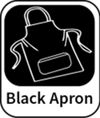The weather is getting warmer, and the plants are growing faster. There is so much to talk about! But I’ll keep it brief.
Seed starting was great — mostly successful — but I learned a few lessons that might help others. I tried using a seed sprouting chamber for tomatoes and peppers since they like warmer soil. If you use this method, you have to be careful to check the chamber often, because once the seeds sprout, they will grow taller and taller, looking for light. My chamber didn’t have light, and some seeds sprouted earlier than anticipated, resulting in frail little sprouts grew several inches out of the ground. Thankfully, those seeds were tomatoes, so all the tiny hairs along the stem could turn into roots. I saved some of them by burying them deep in a new container!
At this point, the little plants are ready for ‘hardening off’, an important step for plants grown inside to survive in the relatively harsher conditions of your yard. To harden off plants, bring them outside for a few hours at a time. Each day, increase the time before taking them back in. It’s a simple but crucial step to keep the plants from fatal shock damage.
Mother’s Day weekend is this month, the traditional time to start planting warm-weather crops. So you’re not too late to start if you want to try your green thumb this year! I built several functional raised beds using donated pallets from Mercedes-Benz of Tri-Cities (thanks again!), but you can find them all over if you ask politely. Soil is the other expensive part of beds, but I reached out to the community through Reddit, and someone had the great idea to ask cemeteries for soil! Sunset Gardens was more than happy to give me their soil and even dropped it off in my driveway for free!

It’s important to check where the soil is coming from; they are right on the river, so it was mostly sand and silt. Typically, people wouldn’t prefer that composition, but beggars can’t be choosers. Several nearby neighborhoods with the same soil type grow just fine once amended with compost. I got mine from the Richland Landfill — $25 for as much as I could fit in the truck. The only downside being I had to load it myself (with my brother’s help!). So for under $30, I made several beds, and all it took was connecting with the community (and some physical labor).
I’d also like to mention composting since it’s the time of year when people are starting to mow their lawns. The traditional ‘browns and greens’ way of thinking about composting was a good method for me to figure out. Half carbon and half nitrogen, mixed in a pile with water. I collected all the sticks and branches from the fall and winter plus the fallen leaves for the browns (carbon), and chicken waste and grass clippings for the greens (nitrogen). After a few days, I did my first turning. The steam and warmth were sure signs that things were going great! A proper compost pile doesn’t smell bad, so don’t be deterred.
If you want to do some growing and didn’t start anything inside already, don’t fret. The WSU Master Gardeners are having their plant sale on the 12th and 13th of this month, and we’ve been growing plants for the last few months just for this event. It’s a great way to get already established plants and help support a nonprofit that does great work in the community. I’m looking forward to it!

Thanks for reading. Have a great month, and if you want to reach out and talk gardening or anything else, send me an email at Food4EveryoneTC@gmail.com or message @Food4EveryoneTC on Instagram.
www.blackapronwa.com
Instagram: food4everyonetc and blackapronwa
Email: blackapronwa@gmail.com
Edited by Asher Bruce.


